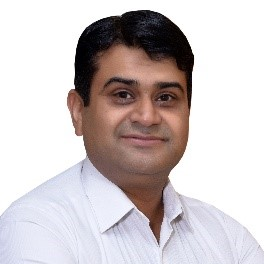Polymeric Materials for Oral and Maxillofacial Reconstructive Treatment
A special issue of Materials (ISSN 1996-1944). This special issue belongs to the section "Biomaterials".
Deadline for manuscript submissions: closed (20 February 2023) | Viewed by 18634
Special Issue Editors
Interests: dental implants; finite element analysis; biomechanics; bond strength; fatigue; partial restorations; intraradicular retainer
Special Issues, Collections and Topics in MDPI journals
Interests: dental biomaterials; natural polymers; molecular biology; electrospinning; oral tissue regeneration; nanotechnology; biomolecules; clinical dentistry
Special Issues, Collections and Topics in MDPI journals
Interests: conservative dentistry; endodontics; restorative dentistry; endodontics
Special Issues, Collections and Topics in MDPI journals
Special Issue Information
Dear Colleagues,
Nowadays, polymeric biomaterials can be successfully applied in various medical spheres and especially in dentistry. There is a wide variety of polymeric materials indicated in the treatment of dental and maxillofacial diseases and defects, such as dental caries, complete and partial edentulousness, maxillofacial defects, and many other pathological conditions and abnormalities. The desirable characteristic features of polymers, such as biocompatibility, easy handling, and having a fast process for their manufacture associated with relative low cost, have increased their popularity for application in the production of various dental and maxillofacial restorations. In particular, the application of polymeric materials in the oral cavity due to their drug delivery capability and antimicrobial properties should be highlighted in addition to their use in preventive, reconstructive, and regenerative therapies.
With the aid of 3D printing technologies, new promising alternatives in dentistry and medical fields are emerging with improved functionality compared to the current biomaterials. These new 3D printing resin materials offer improved physical, mechanical, and antibacterial characteristics for oral and medical appliances. However, there is lack of data to fulfill the knowledge of polymeric biomaterials for oral and maxillofacial reconstructive treatment. Therefore, this Special Issue invites researchers and clinicians specializing in material sciences, dentistry, medicine, 3D printing, and CAD/CAM to submit their findings as scientific articles.
The aim of this Special issue is to highlight the latest achievements in the field of polymeric sciences in oral and maxillofacial reconstructive treatment. We invite authors to provide their submissions in the form of original research articles, in vitro studies, in silico analyses, review articles, short communications, technical notes, study protocols, and clinical trials.
Dr. João-Paulo-Mendes Tribst
Guest Editor
Prof. Dr. Muhammad Zafar
Dr. Mohmed Isaqali Karobari
co-Guest Editor
Dr. Artak Heboyan
Assistant Guest Editor
Manuscript Submission Information
Manuscripts should be submitted online at www.mdpi.com by registering and logging in to this website. Once you are registered, click here to go to the submission form. Manuscripts can be submitted until the deadline. All submissions that pass pre-check are peer-reviewed. Accepted papers will be published continuously in the journal (as soon as accepted) and will be listed together on the special issue website. Research articles, review articles as well as short communications are invited. For planned papers, a title and short abstract (about 100 words) can be sent to the Editorial Office for announcement on this website.
Submitted manuscripts should not have been published previously, nor be under consideration for publication elsewhere (except conference proceedings papers). All manuscripts are thoroughly refereed through a single-blind peer-review process. A guide for authors and other relevant information for submission of manuscripts is available on the Instructions for Authors page. Materials is an international peer-reviewed open access semimonthly journal published by MDPI.
Please visit the Instructions for Authors page before submitting a manuscript. The Article Processing Charge (APC) for publication in this open access journal is 2600 CHF (Swiss Francs). Submitted papers should be well formatted and use good English. Authors may use MDPI's English editing service prior to publication or during author revisions.
Keywords
- dental biomaterials
- dental polymers
- dental adhesives
- resin composites
- impression materials
- mechanical properties
- reconstructive dentistry
- stress analysis
- PEEK
- PEKK
- PMMA









